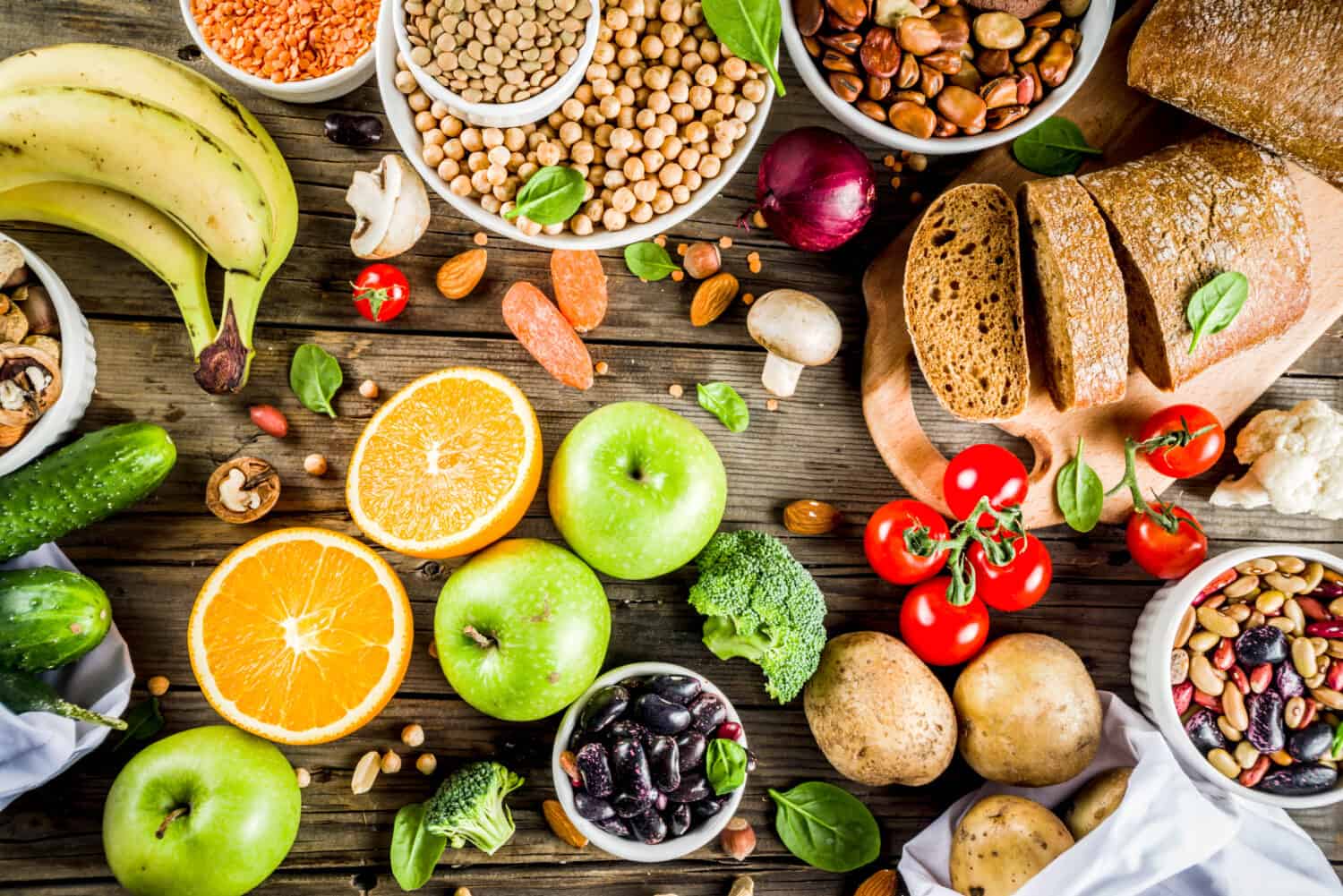Have you ever wondered about the role that vitamins play in the body? Well, you’re in the right place to learn more. This simple chart reveals which foods provide different vitamins, which makes it easy to know what to shop for. Vitamins are essential in human growth. From a young age, our bodies need two categories of vitamins to thrive and develop in the necessary ways.
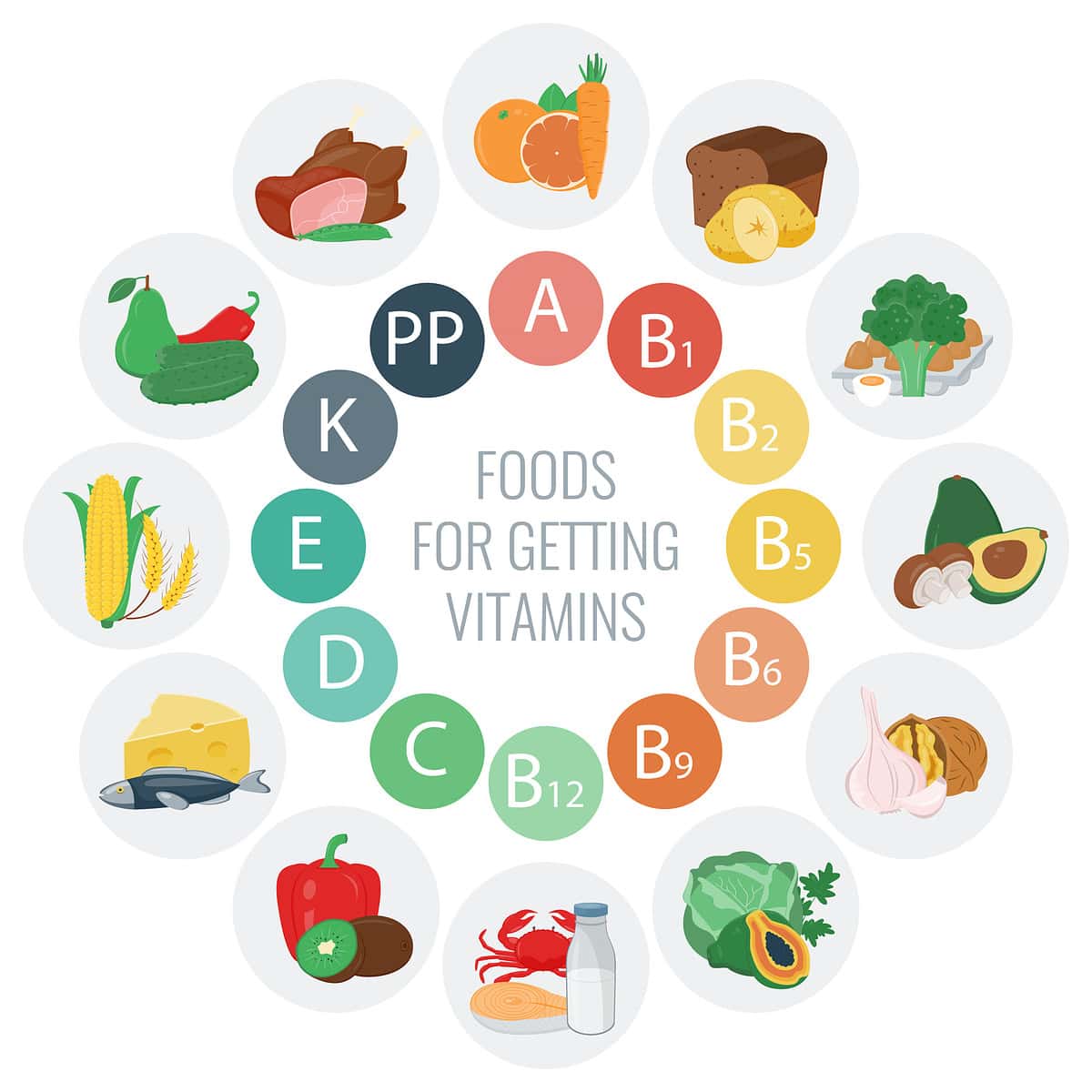
©Voinau Pavel/Shutterstock.com
These two categories include fat-soluble vitamins, which are stored in your body, and water-soluble vitamins. These are not as easily stored in your body. This second class of vitamins gets used up quickly. It is easily flushed out, either through your circulatory system or by peeing. So, you need to consume the right foods or supplements that will provide these to your body every day. Whereas fat-soluble vitamins can stay in the fat stores, and therefore last longer. Vitamins are naturally occurring in products both plant and animal. So, it's good to know which foods focus on for vitamin intake (via KidsHealth.org).
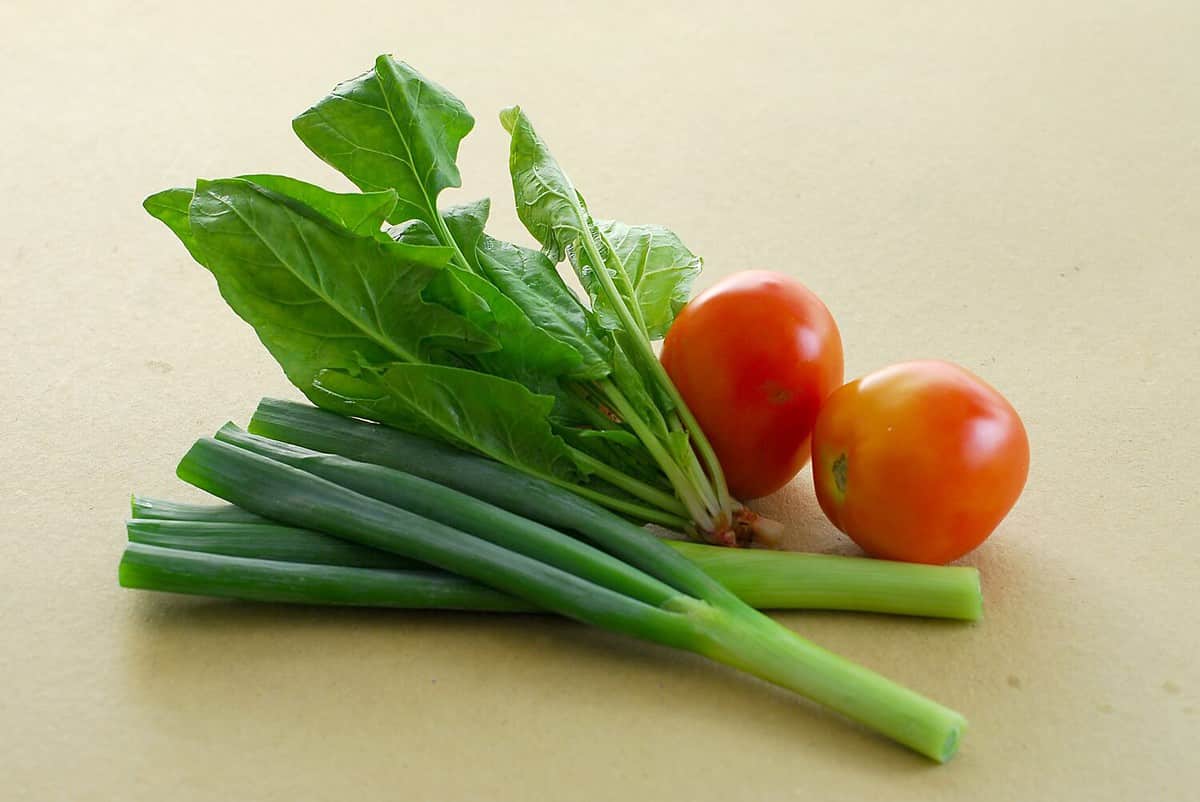
There are numerous vegetables, and other kinds of foods that are full of necessary vitamins.
©hendra bray/Shutterstock.com
The Vitamins
In this post, we’ll get into the basics of what each necessary vitamin does. Following the chart, we'll be covering the functioning power, and benefits of vitamins A, B vitamins, C, D, E, K, and vitamin PP. This last one is actually a type of vitamin B, but you'll have to read on to learn more. Using this simple chart, we’ll discuss which foods provide different vitamins, and how and where to find them in foods. Note that many of these foods contain multiple vitamins, so you can pick and choose your source. By the end of this, you'll definitely have a better idea of what to shop for. And many ideas of where to look for these foods! There are lots of ways to incorporate important vitamins into your diet, so read on to learn more.
Vitamin A
Starting off with vitamin A, which is a fat-soluble vitamin. As per the chart above, you'll see this vitamin is naturally found in food items such as carrots and oranges. If you've ever heard the term”beta-carotene,” that is a precursor to vitamin A. Beta-carotene is what gives these fruits and vegetables, their orange coloration. It helps with bodily processes including eye health, white blood cell activity and bone creation, and cell growth and division. Other foods you can get a good source of vitamin A from include tomatoes, fish oil, mango, and cantaloupe. It's also in red bell peppers, eggs, and milk (via Harvard.edu).
Vitamin B1
This vitamin complex is a water-soluble vitamin. This means daily intake is the best way to ensure you're getting enough in your system. Also known as Thiamin, vitamin B1 helps with the growth and basic functioning power of cells. Not getting enough Thiamin, can result in problems with the areas of your body that need the most energy. This includes your brain and your heart! So, this is an important one to include. Looking for which foods provide different vitamins? You'll find vitamin B1 in whole grain products, like breads, potatoes, pork, fish, yogurt, peas, lentils, sunflower seeds, and beans. With all those options, there's gotta be a recipe in there somewhere!
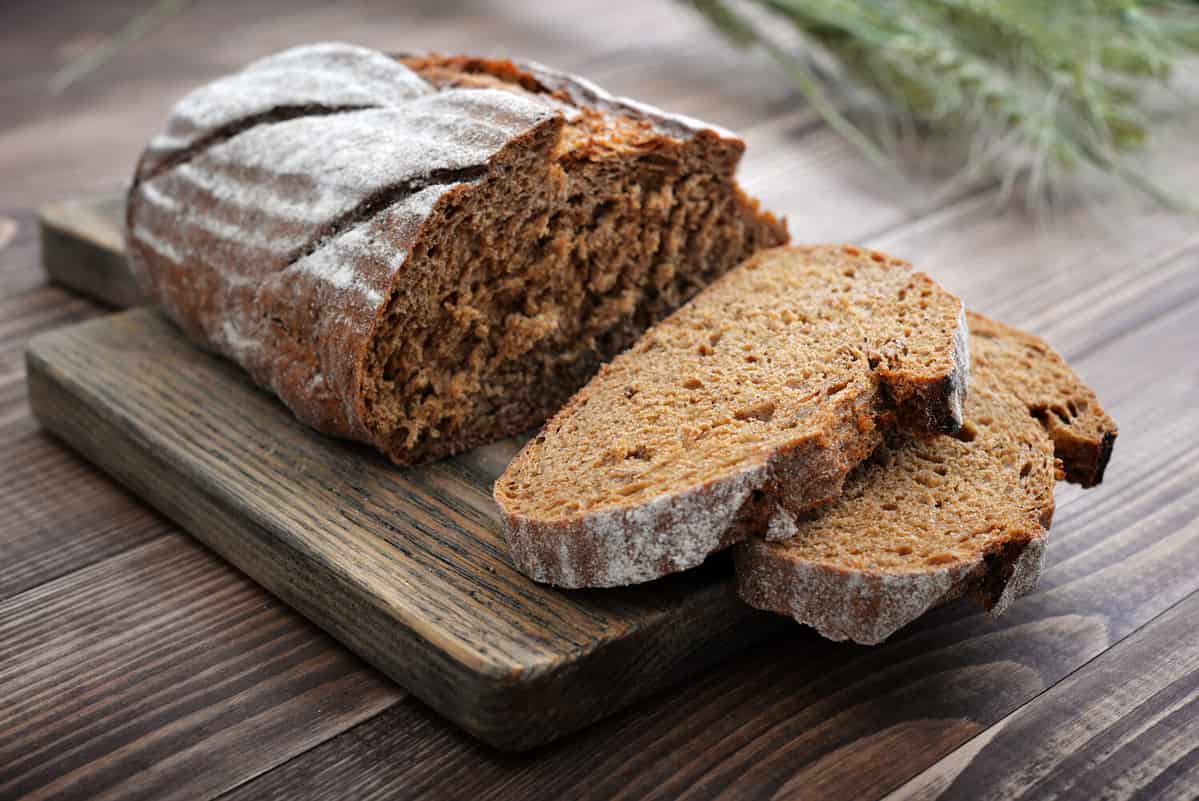
Dark rye bread that's made with whole grain flour is a good source of vitamin B1.
©mama_mia/Shutterstock.com
Vitamin B2
Continuing with the B vitamins, all of these are considered water-soluble as well. So, that means you should absolutely try to incorporate vitamin B-rich foods into your diet. If you refer to the chart, you'll see that green vegetables( broccoli and spinach), are good sources of vitamin B2. Eggs are too! Vitamin B2 is also called riboflavin, and it is a vitamin that aids in bodily processes. B2 has a big role in enzymic functioning. And it gets absorbed really quickly into the body for these important processes. Other foods you can look for vitamin B2 include cheese, yogurt, and organ meats. It's found in lean cuts of beef, pork, salmon, chicken breast, milk, and almonds. It can also be taken as a supplement.
Vitamin B5
Also called Pantothenic Acid, vitamin B5 is another enzyme helper. B5 is part of the process for creating coenzyme A. This compound assists enzymes with breaking down fatty acids, as well as in building fats. It is an important aspect of metabolic functioning. Although your gut can produce some amount of B5, this water-soluble vitamin should be replenished daily, if possible. You'll find vitamin b5 in tasty foods such as avocados, mushrooms, brown rice, and oats. It's also in chicken breast, beef, organ meats, and eggs. For more on which foods provide different vitamins, check out this full list of options for B5 foods.
Vitamin B6
Moving on to vitamin B6, another water-soluble vitamin. This organic compound is involved in the creation of Pyridoxal 5’ phosphate, a coenzyme involved in numerous processes. B6 is integral to the enzyme processes involved in breaking down carbohydrates, fats, and proteins. It is involved in supporting your immune system, and brain health. It helps regulate levels of the amino acid homocysteine, which is linked to heart health. Look for vitamin B6 in onions, and certain nuts (walnuts, and pistachios). It's also in tuna, chickpeas, leafy greens, and some fruits (banana, cantaloupe, papayas).
Vitamin B9
Commonly known as Folic Acid or Folate, vitamin B9 is water-soluble. Vitamin B9 is a key player in regulating the amino acid homocysteine, it works in tandem with vitamin B6! Folate is a part of the processes for DNA and RNA formation. It is also important for the health of red blood cells. It is integral to development processes like pregnancy. For this reason, many pregnant individuals will take folic acid supplements to retain this vitamin throughout fetal development. According to Harvard.edu, the supplement form of folic acid is absorbed 85% better than sourcing it directly from food. There is about a 50% absorption rate for foods. However, you can still get folic acid from whole grain foods, fresh fruits like papaya, cabbage, and dark leafy greens. It's also peanuts, liver meat, beans, eggs, and sea food.
Vitamin B12
And, for the last of the vitamin B included on this chart, we have the water-soluble vitamin B12. This vitamin B complex helps to form red blood cells and DNA. It is an important feature in creating healthy, and functional, brain and nerve cells. This particular vitamin binds to proteins as they enter our body. This enables them to be absorbed in the small intensive, regulating vitamin intake. There are high-dosage supplements available, especially in case of deficiency. You'll also find vitamin B12 in foods such as fish, crab, red meat, and liver meat. It's also in milk, eggs, dairy products, soy/rice milk, and poultry.
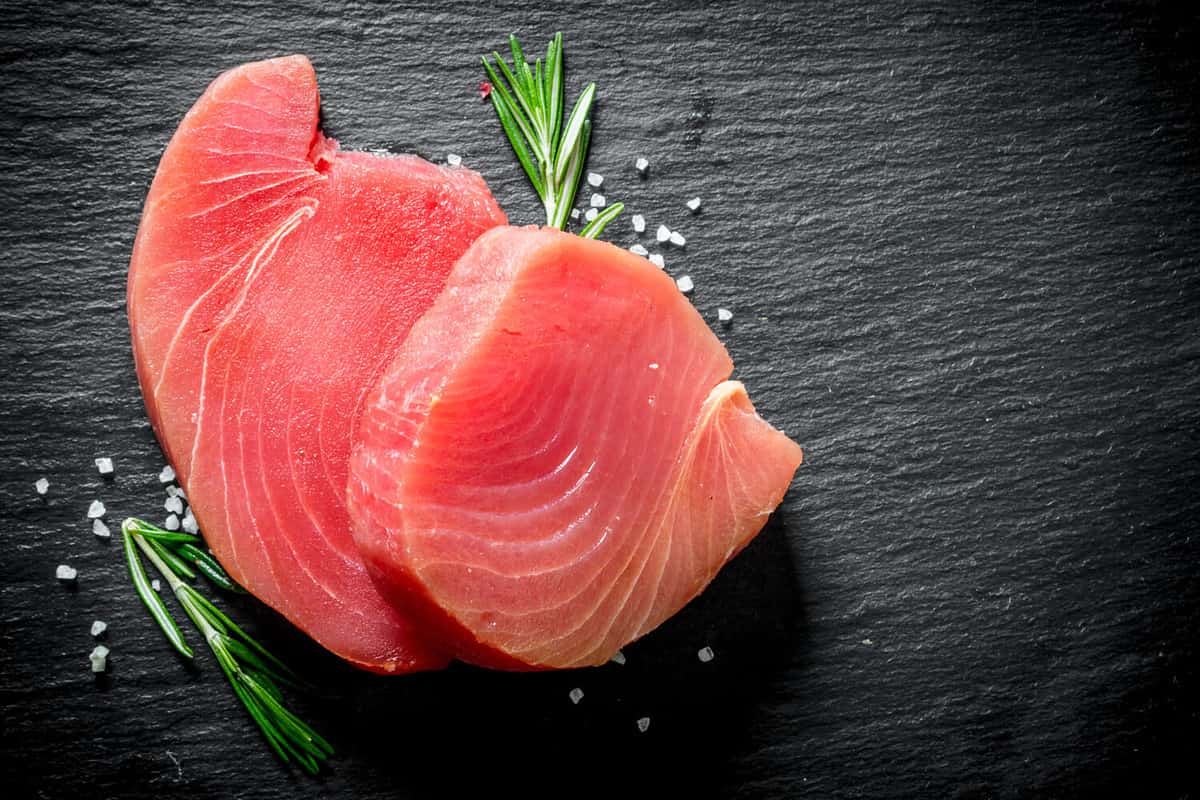
You'll find vitamin B6
andvitamin B12 in tuna steaks, which can be prepared in all kinds of tasty ways!
©Olesya_sh/Shutterstock.com
Vitamin C
Onto vitamin C, another water-soluble vitamin. Vitamin C is known commonly as an immune-boosting vitamin. This is why many tablets and medicines used to treat colds and illnesses include this vitamin. It is involved with bodily healing and infection control. It's a part of collagen production and is involved in the communication processes. This specifically applies to hormones and chemical messengers throughout the brain and nervous system. Look for vitamin C in the usual suspects — orange juice, and citrus fruits. However, you'll also find it in bell peppers, kiwi fruits, strawberries, tomatoes, white potatoes, cauliflower, Brussels sprouts, and broccoli!
Vitamin D
Here we have our first fat-soluble vitamin on this list. This means that the vitamin is stored for longer within the body. It doesn't dissolve in the same manner as vitamins B, C, and PP (more on that in a moment!) Vitamin D is actually made within the body as a hormone. As a nutrient, our bodies need it for the processes of absorbing and retaining calcium and phosphorus for bone production. Vitamin D has been studied for its link to cancer cell growth reduction. It has ties to infection and inflammation control. Vitamin D is best absorbed through fortified foods and supplements, but it can be found in certain foods. It is in cod liver oil, certain kinds of fish, beef liver, egg yolks, and fortified cheeses, milk, and cereals.
Vitamin E
Another fat-soluble vitamin is vitamin E which is utilized in its alpha-tocopherol form within the body. Vitamin E is involved in immune function and stopping heart clots in arteries. It is a powerful antioxidant that can combat cancer, vision loss, and other bodily function breakdowns. You'll find vitamin E in wheat germ, corn, sunflower, safflower, and soybean oils. It's also naturally occurring in pumpkins, peanuts, almonds, bell peppers, asparagus, avocados, mangoes, beet, collard, and spinach greens.
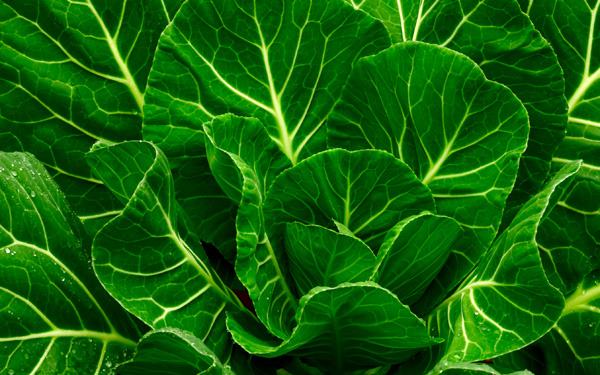
Collard greens are a good source of vitamins E, A, K, and C (via Medical News Today).
©chantel/Shutterstock.com
Vitamin K
Vitamin K shows up in two forms, the first, phylloquinone, is common in dark leafy greens (including collard greens). The other type, known as menaquinones, can be found in fermented foods, animal products, and meats. Vitamin K is involved in blood clotting and bone-building. It is used in liver processes, the brain, the heart, and the pancreas. As you can see from the chart, vitamin K is found in pears, cucumbers, peppers, and other leafy greens. It's also found in soybean and canola oil.
Vitamin PP (niacinamide) and Vitamin B3
Lastly, for this chart at least, let's talk about vitamin PP. This is actually a form of vitamin B3 which is involved in the processes for keeping your skin healthy. For this reason, vitamin PP is a common ingredient in skin care under its common name niacinamide. Vitamin PP can help in reducing inflammation and is also a deterrent in the development of cancerous skin cells. Using and consuming vitamin PP-rich foods can help with DNA repair. Especially in cases where it's been damaged by UV rays. Vitamin PP has been linked to the reduction of harmful phosphate levels in individuals with kidney dysfunction. It does this by blocking the absorption rate (via VinMec Healthcare).
Vitamin B3 or niacin is a water-soluble B vitamin. It is involved in enzyme functioning and has a role in over 400 enzymic processes across the body. It's part of the energy conversation, cholesterol and fat-creation, DNA reparation, and acts as an antioxidant. Look for amounts of vitamin PP in red meat, beef liver, and white meats. It's also in other vegetables and foods that contain B3, including bananas, legumes, nuts, seeds, and brown rice.
The image featured at the top of this post is ©Rimma Bondarenko/Shutterstock.com
